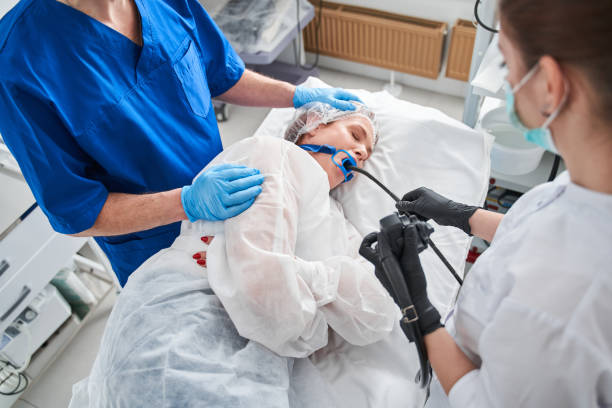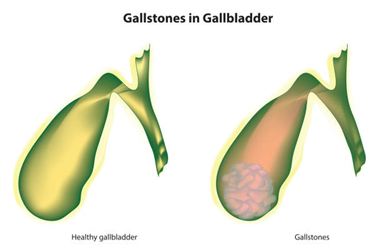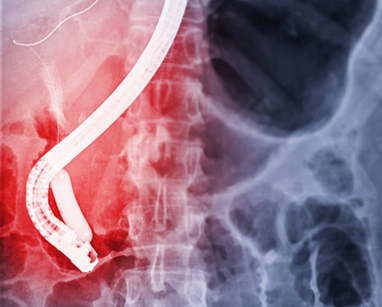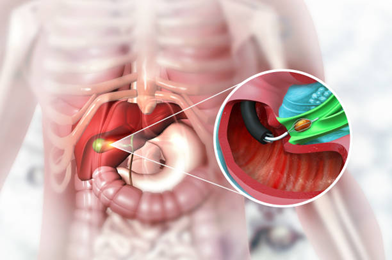ERCP Test
The ERCP test, or Endoscopic Retrograde Cholangiopancreatography, is a sophisticated diagnostic and therapeutic procedure used to examine the bile ducts, pancreatic ducts, and gallbladder. It combines endoscopy and fluoroscopy to identify and treat conditions such as blockages, gallstones, infections, and tumors. Dr. Ksheetij Kothari, a leading gastroenterologist in Pune, is known for his expertise in performing ERCP with precision and safety. With years of experience in advanced gastrointestinal care, he ensures accurate diagnosis and personalized treatment for patients undergoing this procedure.

What is the ERCP test for?
The ERCP test is primarily used to diagnose and treat conditions affecting the bile ducts, liver, gallbladder, and pancreas. These include bile duct stones, strictures (narrowing), pancreatitis, and tumors. It is an essential tool for visualizing the gallbladder duct, allowing for early detection of abnormalities that other imaging tests might miss. In many cases, it also serves as a therapeutic procedure—meaning blockages or stones can be removed during the same session.
Who needs ERCP?
ERCP is recommended for individuals experiencing any of the following conditions:
- Biliary Obstruction:
- Choledocholithiasis (common bile duct stones) – suspected or confirmed
- Cholangitis – especially if septic and requires drainage
- Malignant biliary strictures – e.g., cholangiocarcinoma, pancreatic head cancer
- Benign biliary strictures – e.g., post-surgical (e.g., post-cholecystectomy), primary sclerosing cholangitis.

- Pancreatic Conditions:
- Chronic pancreatitis with ductal strictures or stones
- Pancreatic ductal leaks or pseudocyst drainage
- Pancreatic divisum with recurrent pancreatitis (selective cases)
- Iatrogenic or Postoperative Injuries:
- Bile leak after cholecystectomy or liver transplant
- Post-operative biliary strictures or obstruction
- Therapeutic Interventions:
- Stent placement (plastic or metal) for biliary drainage
- Sphincterotomy for stone extraction or stricture management
- Balloon dilation of strictures
- Removal of migrated biliary stents.
How does ERCP work?
ERCP merges two technologies: endoscopy and fluoroscopy.
A flexible endoscope is inserted through the mouth, down to the duodenum, where a contrast dye is injected into the bile and pancreatic ducts.
This dye allows for detailed X-ray imaging of the ductal structures.
If abnormalities such as gallstones, strictures, or tumors are found, tools can be passed through the endoscope to treat the issue immediately—making it both a diagnostic and therapeutic procedure.

Procedure of ERCP
The ERCP procedure is generally performed in a hospital setting with the following steps:
Preparation: Fast for 6–8 hours before the procedure. An IV line is placed for sedation.
Sedation: Sedatives or anesthesia are administered for comfort.
Endoscope insertion: A flexible endoscope is inserted through the mouth to the duodenum.
Contrast dye injection: Contrast dye is injected into the bile and pancreatic ducts for X-ray imaging.

Imaging: Real-time X-rays are taken to examine the bile ducts, gallbladder, and pancreas.
Therapeutic intervention: If any blockages, stones, or other abnormalities are identified, treatment can be performed during the procedure, such as stone removal, stent placement, or biopsy.
Completion: The endoscope is removed after imaging and treatment.
Recovery: You will be monitored for a few hours before going home if there are no complications.
How to prepare for ERCP
Fasting: Avoid eating or drinking for at least 6–8 hours before the procedure to ensure your stomach is empty.
Medications: Inform your doctor of any medications you are taking, especially blood thinners or diabetes medications. You may need to adjust them before the procedure.
Allergies: Inform your doctor about any allergies, especially to contrast dye, anesthesia, or sedatives.
Medical history: Share any relevant medical conditions or prior surgeries to help your doctor prepare for the procedure.
Transportation: Arrange for someone to drive you home after the procedure, as the sedatives may affect your ability to drive.
Can I go home after ERCP?
In most cases, ERCP is performed as a day-care procedure, and patients are allowed to go home a few hours after the test. However, this depends on the complexity of the case and whether any interventions were performed. If stents are placed or complications arise, short-term hospitalization may be recommended. It is important to arrange for someone to accompany you home, as the sedatives used during the procedure can impair alertness for several hours.
When do I get my results after ERCP?
Preliminary findings from the ERCP can often be discussed immediately after the procedure. However, if biopsies or tissue samples are taken, the final pathology report may take a few days. Your doctor will schedule a follow-up consultation to discuss the results, explain any interventions done during the ERCP, and outline further treatment or monitoring plans if needed.
What is the cost of an ERCP test?
The ERCP test cost in Pune can vary based on the hospital, type of sedation used, and whether therapeutic interventions are performed. On average, it ranges from ₹70,000 to ₹1,50,000. Factors influencing the cost include facility charges, consultation, post-procedure care, and additional diagnostic services. Despite the variation, ERCP remains a cost-effective method considering it can serve both diagnostic and therapeutic purposes in a single sitting.
How long is ERCP recovery?
Recovery from ERCP is usually quick, with most patients resuming light activities within 24 hours. Some may experience mild bloating or sore throat due to the endoscope. If a therapeutic intervention is performed, recovery might take a bit longer, and dietary restrictions may be advised temporarily. A follow-up is essential to monitor healing and evaluate the outcome of the procedure. Full recovery generally occurs within a few days unless complications arise.
Frequently Asked Questions
Is ERCP a painful procedure?
No, ERCP is usually not painful since it is performed under sedation or anesthesia. You will experience some mild throat pain afterwards.
How is liver and pancreas endoscopy done?
Liver and pancreas endoscopy through ERCP involves inserting a thin, flexible tube with a camera into the mouth, reaching the small intestine to access the bile and pancreatic ducts.
Can ERCP help in pancreatitis diagnosis?
Yes, ERCP can assist in pancreatitis diagnosis, especially when gallstones or bile duct blockages are suspected as the cause.
What are the risks or side effects of ERCP?
Though rare, potential risks include pancreatitis, infections, bleeding, or perforation. These complications are minimized when the procedure is performed by an experienced specialist.
Can I eat after an ERCP test?
You can generally eat a few hours after the procedure, when the sedation has worn off and there are no side effects. Your doctor will tell you depending upon your situation.
How do I know if I need an ERCP?
If you have persistent abdominal pain, jaundice, abnormal liver tests, or a history of pancreatitis, your gastroenterologist may recommend an ERCP for a detailed evaluation.
